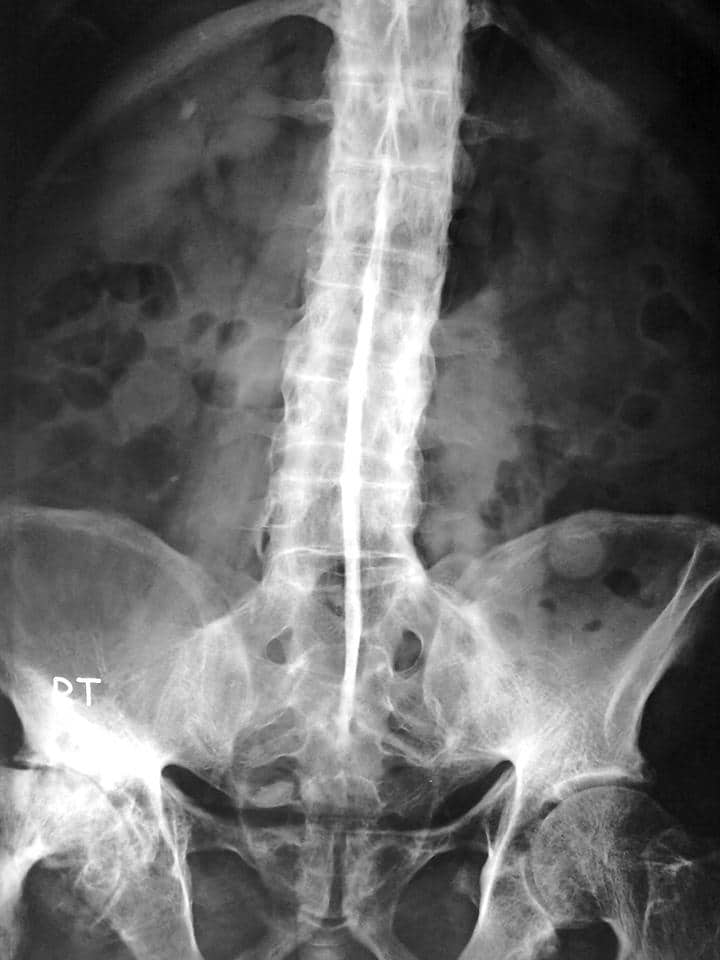Funtabulously Frivolous Friday Five 324
Just when you thought your brain could unwind on a Friday, you realise that it would rather be challenged with some good old fashioned medical trivia FFFF, introducing the Funtabulously Frivolous Friday Five 324
Question 1
Which haematological condition derives its name from the Greek ‘Θάλασσα’ for great sea?
Reveal the funtabulous answer
Thalassemia
The term ‘thalassemia’ was coined in 1932 by George Hoyt Whipple (1878-1976) and Bradford of the University of Rochester, New York. The term is derived from the Greek words ‘thalassic’ (Θάλασσα) meaning ‘sea’ and the suffix -aima (αίμα) or ‘blood,’ denoting the high prevalence of the disorder in people originating from the Mediterranean and Black Seas.
Cooley had described a clinical entity, and it may be wise to use his name to distinguish this disease. We do not like the term “erythroblastic anemia” used by Cooley, as there is nothing especially characteristic about this feature of the blood. The disease is limited almost wholly to Italians, Greeks and Syrians, i. e., to the people originating about the Mediterranean Sea. For this reason the term “thalassemia,” derived from the Greek Θάλασσα , meaning the great sea and used to designate the Mediterranean, may have an appeal.
GH Whipple , WL Bradford. 1932: 364
Question 2
From which condition did megasavant Kim Peek (1951-2009), the muse for Dustin Hoffman’s character in the 1988 film “Rain Man‘, suffer
Reveal the funtabulous answer
FG Syndrome (Opitz-Kaveggia syndrome)
In 1974, John M. Opitz and Elizabeth G. Kaveggia (1926-2014) named the condition FG syndrome derived from the initials of the surnames of two sisters who had had a total of five affected sons. They published again in 1982 having followed up eight affected males in the FG family.
In his 2008 publication, Opitz described patient 15 (family 12), the megasavant Kim Peek. Kim’s tested IQ was 87, however he possessed prodigious gifts in a dozen intellectual areas, and was an honorary alumnus of Oxford University. With perfect photographic memory, Kim could recite whole paragraphs from a book at the mere mention of a page number. By age 6, he had memorized the entire index of a set of encyclopedias. He was able to read both pages of a paperback book simultaneously, the right page with his right eye, the left page with his left eye.
Kim had a large head and brain with persistent torticollis to the right, hypertelorism, hypotonia, downward slant of palpebral fissures, a high broad forehead, right anterior cowlick, a (congenitally) hypotonic mouth-breathing face, striking hypotonia/lymphedema sequence, broad halluces and thumbs, and a prominent lower lip with mild micrognathia and malocclusion. His 1988 MRI scan showed a complete absence of the corpus callosum; normal gyral pattern and cerebral cortex; a dilated third ventricle; enlarged posterior bodies and horns of the lateral ventricles; normal brainstem; and an enlarged fourth ventricle.
Opitz concluded that Kim Peek had FGS rather than autism
References:
- Opitz JM, Kaveggia EG. The FG syndrome: an X-linked recessive syndrome of multiple congenital anomalies and mental retardation. Zeitschrift für Kinderheilkunde, 1974; 117: 1-18
- Opitz JM, Smith JF, Santoro L. The FG syndromes (Online Mendelian Inheritance in Man 305450): perspective in 2008. Adv Pediatr. 2008;55:123-170.
- Peek F. The Real Rain Man. Salt lake City, UT: Harkness; 1996.
- Treffert DA, Christensen DD. Inside the mind of a savant. Sci Am. 2005;293(6):108-113.
- Elizabeth G. Kaveggia (1926-2014)
- John M. Opitz
Question 3
Dr Friedman and Dr Ray Rosenman were both cardiologists in San Fransisco and noted their armchairs in the waiting room needed re-upholstering more frequently than normal. What personality types were sitting in their waiting room?
Reveal the funtabulous answer
Type A personality
When the upholster arrived to do the work, he carefully inspected the chairs and noted the upholstery had been worn in an unusual way. He had never seen this pattern in other physicians’ waiting rooms. The front few inches of the seat cushions, as well as the front portion of the armrests, were prematurely worn while the back areas of the chairs were not… He concluded that the people in the chairs were anxiously sitting on the edge of their seats, likely holding on to the edges of their armrests…
Colbert, Don 2003
Dr. Friedman and Dr. Ray H. Rosenman, both cardiologists, first proposed the Type A theory in scientific publications in the 1950’s, and wrote a popular book about it in 1974, ”Type A Behavior and Your Heart.”
In one of their largest studies they had 3000 healthy men and followed them for 8.5 years and discovered that those men with a type A personality were 50% more likely to develop coronary artery disease compared to there less driven type B counterparts. However, it was only the early studies that showed any association and beyond the 1980s repeated studies have been negative. Implications with smoking may be the reason for the positive results in the 50s to 70s.
Type A quickly became a household phrase, and more recently the term ‘hurry sickness’. So if you find yourself in a hurry, angry at queuing in a traffic jam or huffing and puffing at waiting 60 seconds for your coffee at Starbucks, relax, it might not save your life, but it might save a few armchairs.
See Derek Sivers account of rushing versus not rushing on his coastal bike ride – Relax for the same results
References:
- Colbert, Don. Deadly Emotions: Understand the Mind-Body-Spirit Connection That Can Heal or Destroy You. Nashville: Thomas Nelson Inc. 2003:42.
- Petticrew et al. Type A Behaviour Pattern and Coronary Heart Disease: Philip Morris’s “Crown Jewel” Am J Public Health. 2012;102(11):2018-2025
Question 4
Adrenaline or Epinephrine?
Reveal the funtabulous answer
Blame attributed to Dr James Hayes for this can of worms…
The answer?
Based on the ‘usage argument’; ‘historical precedent’ and ‘etymological derivation’…adrenaline
In 1894, at the University College of London, English physician George Oliver (1841-1915), and physiologist Sir Edward Sharpey-Schafer (1850-1935), observed the effects of the adrenal medulla extract on the heart rate and blood pressure of animals.
American biochemist and pharmacologist, John Jacob Abel (1854 – 1938), of Johns Hopkins University used sheep adrenal glands provided by Armour & Co., to produce a crystalline product that mimicked the blood pressure–increasing effect of Oliver and Schafer’s extract.
Abel first described the product in a paper read before the Association of American Physicians on May 6, 1897, and in more depth as epinephrin in the Proceedings of the American Physiological Society in 1899
Acting on Hyrtl’s suggestion that epinephris would be the best name for the suprarenal capsule, the author has given the name Epinephrin to the active principle as isolated by him.
Abel 1899
Jokichi Takamine (1854-1922), a Japanese biochemist working independently in New York successfully isolated a “pure, stable, crystalline form” of epinephrine. The compound was patented by Takamine and marketed under the trade name “Adrenalin” by Parke, Davis & Company, with whom Takamine had a working relationship
Last summer I devoted my attention to this subject and am pleased to announce that I have succeeded in isolating the active principle in a pure, stable, crystalline form, the base itself. I do not by any means desire to usurp the credit due to the pioneer investigators, yet in view of the fact that no previous authors have obtained the active principle in a pure form, and that there may exist some room for controversy, I have, therefore, termed my substance, as I isolated, “Adrenalin.”
Takamine 1901
Abel isolated the monobenzoyl derivative of the hormone rather than the active principle itself. Takamine isolated the hormone, although it was later shown that the natural product is itself a mixture of 2 substances, adrenaline and noradrenaline.

Thomas Aldrich, a Parke, Davis & Company chemist deserves the credit for determining the correct chemical formula of adrenaline. In August of 1901, Aldrich isolated a crystalline substance from the suprarenal glands. He compared his compound with that of Takamine, (made available to Aldrich through Takamine’s relationship with Parke, Davis & Company), and found the 2 substances to be identical. Aldrich then conducted an elementary analysis of adrenalin. His formula for the compound was somewhat different from Takamine’s and later shown to be the correct one as C9H13NO3
It is interesting to note in this connection that if we subtract a benzoyl residue from Abel’s formula for “epinephrin” – C17H15NO4 – we obtain a formula C10H10NO3 which is not very far removed from that of adrenalin – C9H13NO3 – a difference that can be readily explained if we suppose either of the substances to be contaminated with other bodies.
Aldrich 1901
Parke, Davis & Co marketed the extract under the proprietary name Adrenalin, and so epinephrine became the generic name in America, on the incorrect assumption that Abel’s extract was the same as Takamine’s Adrenalin. In fact, Abel’s epinephrin was the inactive benzoylated derivative.
In Europe, Adrenalin was not marketed, and adrenaline became adopted as the generic name with strong support from the eminent English Nobel laureate and pharmacologist Sir Henry Hallett Dale (1875-1978) who argued that the term epinephrine had been used to describe extracts that were not physiologically the same as extracts called adrenaline.
In physiological literature the terminology is settled by those who describe the physiological action…. [No] physiologists owed anything to Abel’s work or could make use of his inactive substances
Dale 1906

References
- Oliver G, Schäfer EA. The Physiological Effects of Extracts of the Suprarenal Capsules. J Physiol. 1895 Jul 18;18(3):230-76
- Abel J, Crawford A. On the blood-pressure-raising constituent of the suprarenal capsule. Bull Johns Hopkins Hosp. 1897; 8: 151-157
- Abel JJ. On epinephrin, the active constituent of the suprarenal capsule and its compounds. In: Proceedings of the American Physiological Society. American Journal of Physiology. 1899; 2(5): iii-xxi
- Solomon SC. The use of adrenal substance in the treatment of asthma. JAMA 1900;XXXIV(19):1164-1166
- Takamine J. Adrenalin, the active principle of the suprarenal glands, and its mode of preparation. American Journal of Pharmacy. 1901; 73: 523-531
- Aldrich T. A preliminary report on the active principle of the suprarenal gland. Am J Physiol. 1901; 5(7): 457-461
- Bullowa JJM, Kaplan DM. On the hypodermic use adrenaline chloride in the treatment of asthmatic attacks. Medical News (New York) 1903; 83(17): 783-787
- Tansey EM. What’s in a name? Henry Dale and adrenaline, 1906. Med Hist. 1995 Oct;39(4):459-76.
- Aronson JK. “Where name and image meet”–the argument for “adrenaline”. BMJ. 2000 Feb 19;320(7233):506-9
- McFadden ER Jr. A Century of Asthma. American Journal of Respiratory and Critical Care Medicine. 2004;170(3):215-221
- Parascandola J. Abel, Takamine, and the isolation of epinephrine. J Allergy Clin Immunol. 2010 Feb;125(2):514-7.
- Greer A. Epinephrine: a short history. The Lancet Respiratory Medicine 2015;3(5):350-351
- Josef Hyrtl (1810-1894), professor of anatomy at Vienna
Question 5
Where would you see ‘Dagger sign’?
Reveal the funtabulous answer
In the spinal X-ray of someone suffering from ankylosing spondylitis. It is the single central radiodense line on frontal radiographs related to ossification of the supraspinous and interspinous ligaments secondary to enthesitis.

Reference:
- Radiopaedia – Dagger Sign
…and finally

FFFF
Funtabulously Frivolous Friday Five
Dr Neil Long BMBS FACEM FRCEM FRCPC. Emergency Physician at Kelowna hospital, British Columbia. Loves the misery of alpine climbing and working in austere environments (namely tertiary trauma centres). Supporter of FOAMed, lifelong education and trying to find that elusive peak performance.

